From invigorating citrus notes to dank, earthy, and musky aromas, terpenes are the chemical compounds responsible for the captivating scents and flavours that waft from your favourite cannabis strains. But their influence doesn’t stop at mere fragrance alone. We often categorise cannabis strains as Indica, Sativa, or Hybrid, expecting specific effects from each. However, these categories are broad strokes, and the magic lies in the strain’s terpene profile. Understanding each terpene’s unique nuances can help you find your perfect strain based on the effects that matter to you the most.
Imagine choosing your cannabis based not only on THC content but also on the array of scents, flavours, and effects offered by these terpenes. In this article, we’ll help you do just that. Below, we’re exploring the ten most common terpenes found in cannabis, introducing you to their distinct aromas, flavours, and effects. From the calming effects of myrcene to the citrusy uplift of limonene, we’ll take a deeper look into their profiles, their sources outside of cannabis, and the strains where you’re likely to encounter them.
What Are Terpenes?
Terpenes, the unsung heroes of the cannabis plant, are the aromatic compounds that give each strain its distinct personality. These naturally occurring compounds, found in the resinous glands of the cannabis flower, play a crucial role in defining the strain’s aroma, flavour, and effects. We broke down what they are and how they work in-depth in a different article, so be sure to check that out for further reading. But the gist is that they affect how a strain smells, tastes, and feels.
Beyond their sensory allure, terpenes contribute to the entourage effect. This phenomenon occurs when terpenes and cannabinoids synergize, amplifying the therapeutic potential of both cannabinoids and terpenes themselves. More or less, this synergy helps steer the way a specific strain will make you feel. While cannabinoids like THC and CBD garner much more attention, it’s the intricate dance between terpenes and cannabinoids that shapes how a cannabis strain will affect you.
Terpenes are responsible for guiding your cannabis experience. Some lean towards relaxation, making them common in indica strains. Others bring an energising zing, often found in uplifting sativas. Understanding a strain’s terpene profile can help you pinpoint the desired effects and choose a strain that fits the type of experience you want regardless of its indica, sativa, or hybrid genetics. That said, each terpene holds the power to make your cannabis sesh truly remarkable.
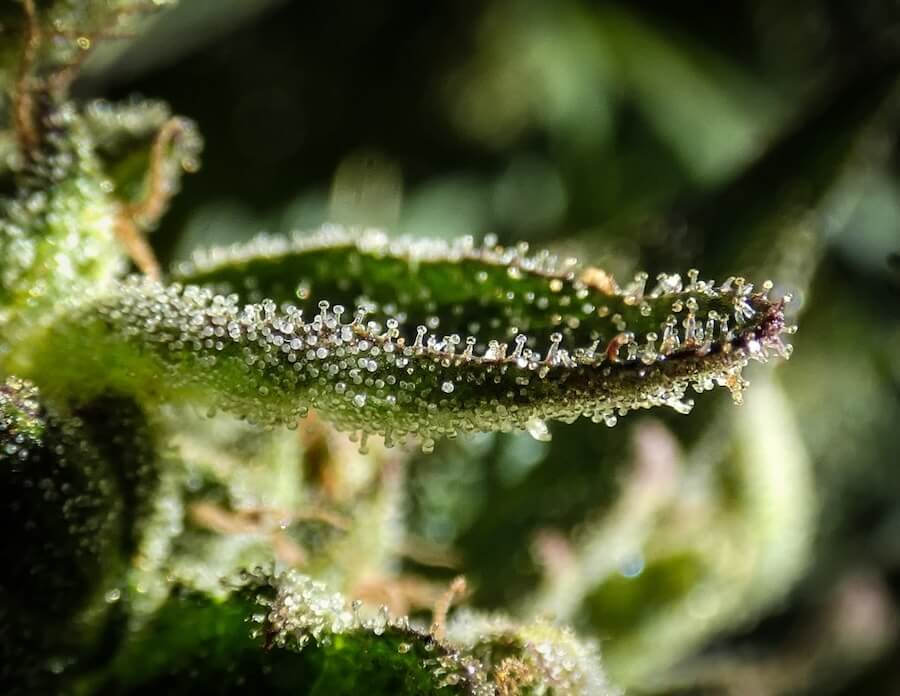
10 Most Common Cannabis Terpenes
Just as each note in a melody contributes to the overall harmony, each terpene adds a layer of richness to your smoke session. Each terpene is like a masterful stroke on the canvas, shaping a strain’s aroma, flavour, and effects in unique ways. From myrcene’s soothing effects to limonene’s mental uplift, these terpenes introduce us to a symphony of scents and sensations. Below, we’re breaking down the profiles of the ten most common cannabis terpenes, unravelling their distinct aromas, flavours, and effects.
1. Myrcene
Myrcene is one of the most prevalent terpenes in the cannabis world, often accounting for its distinctive aroma and flavour. This terpene introduces a musky, earthy scent with a touch of cloves, creating a unique and easily recognizable bouquet. Myrcene is responsible for that weedy smell behind every cannabis strain. When it comes to flavour, myrcene carries herbal and citrus notes, adding depth to the smoke. You can find it in classic strains like Granddaddy Purple and OG Kush. Myrcene is found in a lot more than cannabis, though. It also resides in herbs like thyme, basil, lemongrass, and hops. You can also find it in higher quantities in mangoes and other citrus.
Known for its calming and sedative properties, myrcene is frequently found in indica strains, where relaxation is the aim. However, as one of the most common terpenes in cannabis, it’s often found in mellow hybrid strains that offer a good mix of mind and body effects. It’s the terpene that helps you unwind, melt into tranquillity, and find respite from the stresses of the day. When myrcene is present in a strain, you can expect a soothing experience that will leave you feeling mellow.
2. β-Caryophyllene (Caryophyllene)
Caryophyllene, often called β-caryophyllene, is a terpene that brings a tinge of spice to the cannabis palate. It presents a spicy, peppery aroma and hints of wood and cloves. When it comes to flavour, caryophyllene offers a warm, slightly sweet profile that adds depth and complexity to your smoke. It’s also pretty much guaranteed to make you cough. You can find it in black pepper, cloves, and star anise, as well as classic strains like Super Silver Haze and Girl Scout Cookies.
What sets caryophyllene apart is its unique interaction with the endocannabinoid system. This terpene is similar to cannabinoids and may provide anti-inflammatory and pain-relieving effects, making it a sought-after addition to various strains used as medicine. This versatility has led to its inclusion in both traditional and alternative medicine, showcasing its potential medicinal properties. Its effects are often balanced, contributing to a well-rounded, indica or hybrid-leaning high.
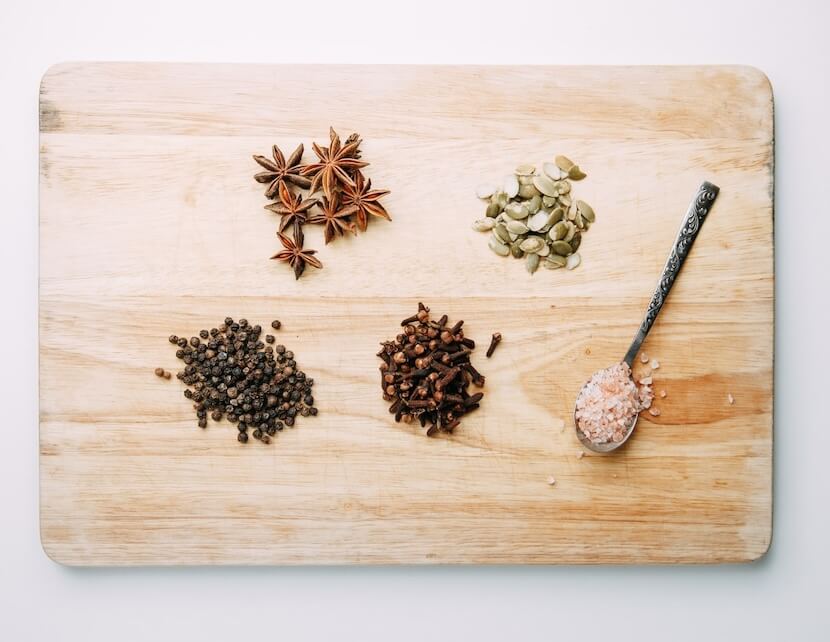
3. Limonene
As the name suggests, limonene is all about the citrus. It fills the air with a zesty, lemony aroma that instantly uplifts the senses. The flavour profile of limonene is equally refreshing, boasting pronounced lemon and lime notes that add a burst of freshness to your cannabis experience.
But what truly distinguishes limonene is its ability to bring an uplifting and euphoric mood to cannabis strains. It’s the terpene you turn to when you need a focused, energetic, and overall mental clarity boost. Limonene is a key player in many sativa-dominant strains, which is why it can be found in strains like Lemon Haze and Durban Poison.
However, it’s also abundant in citrus fruits like lemons, oranges, and grapefruits, where its invigorating properties shine. This versatility has led to its use in various cleaning and personal care products, infusing them with a refreshing, natural essence that may offer antibacterial and anti-inflammatory effects.
4. Pinene
Pinene is the terpene responsible for that unmistakable scent of pine needles, and it’s the most common terpene in the plant kingdom. Its aroma carries the fresh, crisp notes of a pine forest. When it comes to flavour, pinene presents earthy and woody undertones with a subtle hint of (you guessed it) pine.
Evidence suggests that pinene can heighten alertness and mental clarity. Some ongoing studies explore it for memory, which makes sense since strains high in pinene often deliver an uplifting, focused, and motivated experience. Invigorating and inspiring, pinene is also used in cleaning products and aromatherapy infusions since it offers potentially antibacterial, anti-inflammatory, and respiratory-opening benefits.
Pinene thrives in coniferous trees like pine and fir, though it can also be found in herbs like rosemary and sage. If you’re looking for strains where Pinene is the star of the show, start with classics like Pineapple Express and Blue Dream.

5. Humulene (α-Caryophyllene)
Humulene, also known as alpha-caryophyllene, is often found alongside β-caryophyllene. This terpene lends a hint of a thick, resinous earthiness to cannabis. Its aroma is marked by earthy, woody notes, sometimes accompanied by a touch of spice. When it comes to flavour, humulene offers an herbal and slightly woody profile that adds richness and depth to the smoke.
Humulene’s unique appeal lies in its potential anti-inflammatory properties. This terpene may contribute to reducing inflammation and pain, making it a valuable asset in strains aimed at relieving discomfort. Its effects are often balanced, offering a blend of relaxation and mental clarity— so it’s usually found in sativa or hybrid strains.
Humulene is one of the dominant terpenes in hops, which lend their distinctive flavour to beer. However, it can also be found in ginger and ginseng. If you’re searching for strains where humulene plays a prominent role, consider options like Headband and Sour Diesel.
6. Ocimene
Ocimene is a terpene celebrated for its diverse aromatic profile. Its aroma can range from sweet and floral, almost minty, to herbal and woody, making it a chameleon among terpenes. Regarding flavour, ocimene introduces a nuanced combination of natural and almost artificial notes, adding a layer of complexity and candy-like sweetness to the sesh.
What sets ocimene apart is its potential to contribute to various effects. It doesn’t really adhere to a specific category but instead adds a layer of versatility to strains. Depending on the strain’s overall terpene profile, its effects may range from uplifting and energetic to calming and soothing. Ocimene takes somewhat of a backseat driver approach to cannabis.
Ocimene’s aroma can be found in delicate florals like lavender, orchids, and kumquats. Prized for its delicate and unique aroma, you can often find it in perfumes and cosmetics where ocimene’s scent finds its way into fragrances. While ocimene doesn’t appear as often as myrcene or b-caryophyllene, it can still be found in a few strains like Strawberry Cough and Cinex.
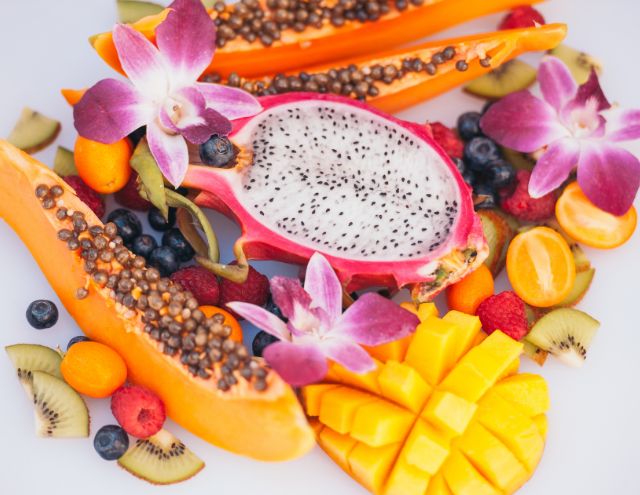
7. Terpinolene
Terpinolene offers a very complex and diverse aroma. Its scent can range from floral and herbal to piney and citrusy, offering a sensory adventure with each encounter. When it comes to flavour, terpinolene introduces an intriguing blend of herbal, floral, and even fruity notes, creating a multi-layered profile that can often be found in strains marked as tropical. For that reason, you’re more likely to encounter it in hybrids and sativas like Jack Herer and Dutch Treat.
It offers notably refreshing and uplifting effects but can still be felt in the body. That said, depending on the terpene profile as a whole, a strain that contains a lot of terpinolene can be an indica, a sativa, or a hybrid. Beyond cannabis, terpinolene can be found in plants like lilacs, nutmeg, and cumin. Boasting anti-inflammatory and anti-bacterial effects, it can often be found in perfumes and cosmetics.
8. Linalool
Linalool is a well-known terpene beloved for its delicate and floral aroma. As the dominant terpene in lavender, it’s known for its sweet, soothing, floral scent. Regarding flavour, linalool carries a gentle floral and citrusy profile, offering a serene and comforting experience. Research suggests that linalool provides a soothing and relaxing effect that may reduce stress and anxiety. It’s the terpene of choice for those seeking a sense of calm and tranquillity. For that reason, linalool often finds its way into aromatherapy infusions, scented candles, cleaning products, and detergents.
Aside from weed, linalool is abundant in lavender, coriander, and sweet basil. It’s most likely to be found in indica-dominant strains and indica-leaning hybrids. Find it in strong strains like Lavender and LA Confidential.

9. Terpinol
Terpinol is a herbaceous and floral terpene often found alongside pinene. Like linalool, these terpenes are notably sedative and may help relieve stress and anxiety. Further, like most terpenes, it’s also anti-inflammatory. You can find it in many essential oils like tea tree oil and soothing aromatherapy infusions.
Its scent is marked by floral and herbal notes, often accompanied by a hint of pine. When it comes to flavour, terpinol carries herbal and piney undertones, adding depth and complexity to the overall profile of any strain that contains it. Look out for it in indica or hybrid strains like White Widow and Girl Scout Cookies and in plants like apples, lilacs, and nutmeg.
10. Bisabolol
Bisabolol is a sweet, delicate, and sleepy terpene. Its scent carries floral notes, reminiscent of chamomile flowers, with a hint of citrus and spice. As for flavour, bisabolol introduces a subtle floral and citrusy profile with a unique pungent effect that adds a little spice to your smoke and a soothing effect to tea. It can be found in chamomile flowers, sage, and candeia trees.
Studies suggest that bisabolol offers potent relaxation and soothing effects. You’d want to choose a strain high in bisabolol for a calm, relaxing, and sedative experience if you’re dealing with stress or trouble sleeping. Its soothing presence also extends to the world of skincare and cosmetics, where bisabolol’s anti-inflammatory properties are harnessed for their potential to promote healthy, radiant skin. If you’re curious about strains featuring bisabolol, choose indica or hybrid options like Harle-Tsu and Pink Kush.
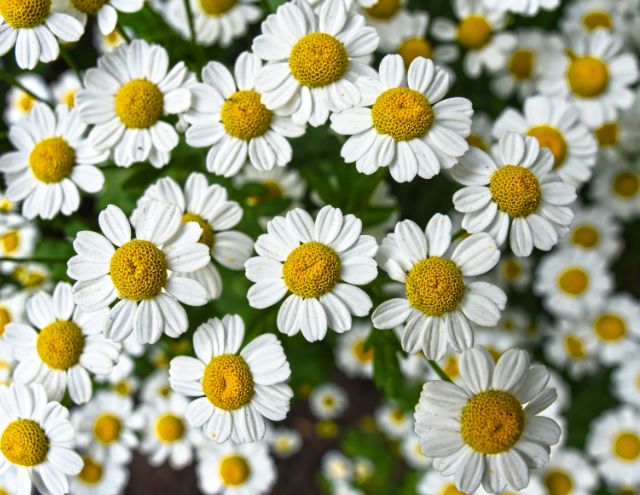
Lesser-Known Terpenes Found in Cannabis
While each strain is primarily defined by its top three most prominent terpenes, a supporting cast of lesser-known terpenes makes their presence felt, even in tiny quantities. These terpenes may make up less than 1% of a given cannabis strain’s terpene profile, but their role in the entourage effect should not be underestimated.
Why are they important? The answer lies in their collective impact. The entourage effect is a phenomenon where the diverse terpene profile of a strain combines synergistically with cannabinoids to enhance the overall experience. Even in small percentages, these terpenes play a role in shaping aroma, flavour, and effects. Even the tiniest amount of a specific terpene can help shape the experience you feel with your weed.
Here are some of the lesser-known terpenes you might encounter:
- Delta-3 Carene: Often found in cedar and parsley, this terpene is a rarity in cannabis strains, present in less than 1%. It’s believed to support the entourage effect by contributing its unique, mellow character.
- Eucalyptol: This terpene, with its distinctive eucalyptus scent, appears infrequently in cannabis. More commonly found in plants like eucalyptus and tea trees, it promotes an energising effect.
- Terpinene: Present in small quantities, terpinene can introduce hints of pine and citrus to a strain’s terpene profile. It’s found in higher concentrations in nutmeg and some citrus fruits and may promote an uplifting effect.
- Sabinene: While not a star player in cannabis, sabinene, with its spicy, woody aroma, adds depth and diversity to indica-dominant strains. It’s also found in herbs like black pepper and spices.
- Camphene: Often found alongside more prominent terpenes, camphene adds a subtle note of herbal freshness to the mix. It’s also present in coniferous trees like camphor and fir.
- Valencene: Known for its citrusy aroma, valencene is a rare find in cannabis but can contribute to strains’ overall sativa-lift. It’s also present in Valencia oranges, from which it derives its name.
These lesser-known terpenes, though present in limited quantities, participate in the bigger picture of effects found in cannabis. While they may not be the soloists, they enrich the entourage and contribute to the overall potency and character of the strains. This is why full-spectrum cannabis products, which preserve the entire terpene orchestra, are favoured by connoisseurs over broad-spectrum or cannabinoid-isolate options.
Choosing Your Perfect Strain by Focusing on Terpene Content
Understanding terpenes is not just about appreciating the intricacies of aroma and flavour in cannabis; it’s also a valuable tool for choosing the best strains to match your preferences and needs. Each terpene contributes to the overall effects of a cannabis strain, from relaxation to energy and focus. By recognizing the dominant terpenes in a strain, you can make informed choices that align with the kind of high you want to experience.
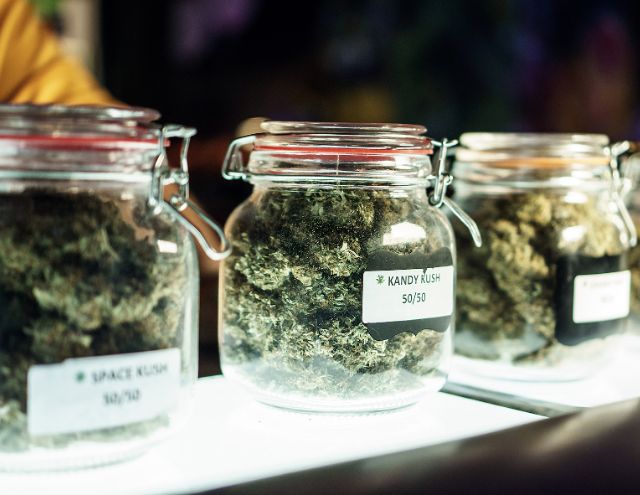
Learning how to identify terpenes in different strains is a skill that can make it a lot easier to find strains you enjoy. It can be as simple as paying attention to the aroma, texture, or even the taste of the strain. Strains that offer strong scents and fragrances and don’t look or feel dry or mouldy are naturally richer in terpenes, so using your senses will be helpful. You’ll want to choose strains that have been properly stored for best results, and store them properly after you bring them home.
Some dispensaries also provide lab-tested terpene profiles for strains, giving you valuable insights into their composition. If you know you’re looking for an upbeat and energising strain, you’d want to look for strains high in energising and focusing terpenes like limonene, pinene, or humulene. On the other hand, you might seek a relaxing strain higher in b-Caryophyllene, linalool, or myrcene.
As you explore different strains and their terpene profiles, you’ll find a vast and diverse world of experiences waiting for you. From strains that induce relaxation to those that boost creativity and focus, terpenes are the key to unlocking the perfect strain for any occasion. Look for bonafide terpene content from lab test results, or opt for the tried and true smell or taste test. Visually inspecting buds to ensure they’re not too dry or too wet can also ensure you’re getting cannabis rich in the terpenes you need to have an effective smoke sesh.
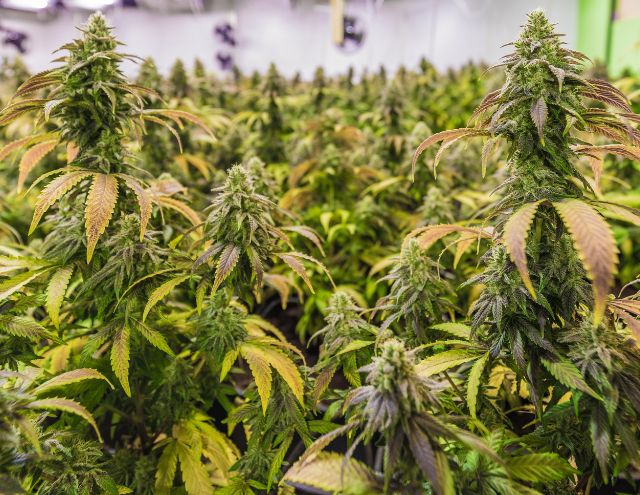
Conclusion
In the end, it’s all about finding the perfect harmony between terpenes, cannabinoids, and your personal preferences. In this guide, we broke down some of the key features of the top terpenes you’re likely to find in weed. But the true magic within a strain lies in the entourage effect, where terpenes and cannabinoids work together to craft a nuanced and potent experience that transcends the strength of one or the other on its own. Use this information as a guide to help you choose a strain to suit any mood at every time of day, and remember, when it comes to terpenes, the more, the merrier.






Leave a Reply